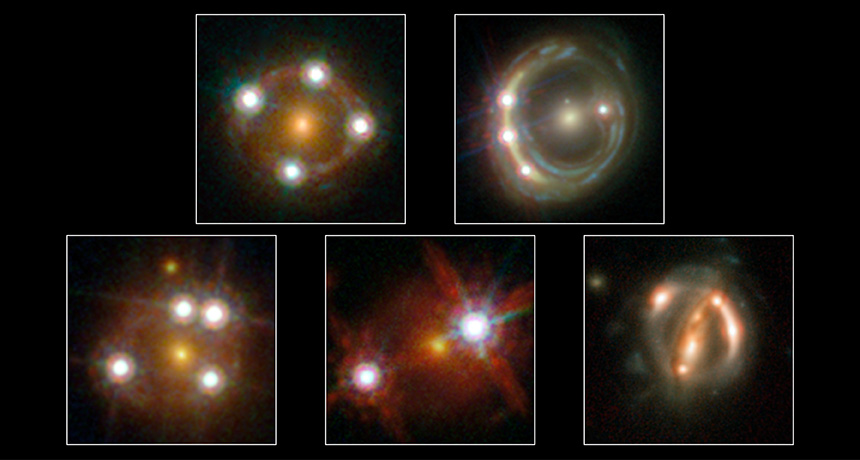New data fuel debate on universe’s expansion rate

A new estimate of how fast the universe is expanding supports one side of an ongoing debate, favoring a more rapid expansion.
Observations of type 1a supernovas imply a faster expansion rate (known as the Hubble constant) than studies of the cosmic microwave background — light that originated early in cosmic history (SN: 8/6/2016, p. 10). Scientists with the H0LiCOW collaboration have now weighed in, using quasars, ultrabright light sources stirred up by supermassive black holes.
Supernova measurements indicate that distant galaxies are separating from one another by 73 kilometers per second for each megaparsec (about 3.3 million light-years) of distance between them. Cosmic microwave background experiments peg the number at 67 km/s per megaparsec. The new quasar measurement, 72 km/s per megaparsec, agrees with the supernova result, the scientists report in the March issue of Monthly Notices of the Royal Astronomical Society.
The scientists observed five distant quasars. In between each quasar and Earth is a large, massive galaxy. That intervening mass bends light like a lens, splitting each quasar’s light into multiple images.
Light from each image took a different path to Earth, so travel time differed, too. The quasars’ flickers allowed scientists to measure the delays — images from the same quasar flickered at different times due to the different paths taken. Because the light’s travel time also depends on how fast the universe is expanding, scientists could calculate the Hubble constant by monitoring the delays.
If the disagreement persists, it could indicate something amiss in scientists’ understanding of the cosmos, perhaps related to the mysterious dark energy that is accelerating the universe’s expansion.